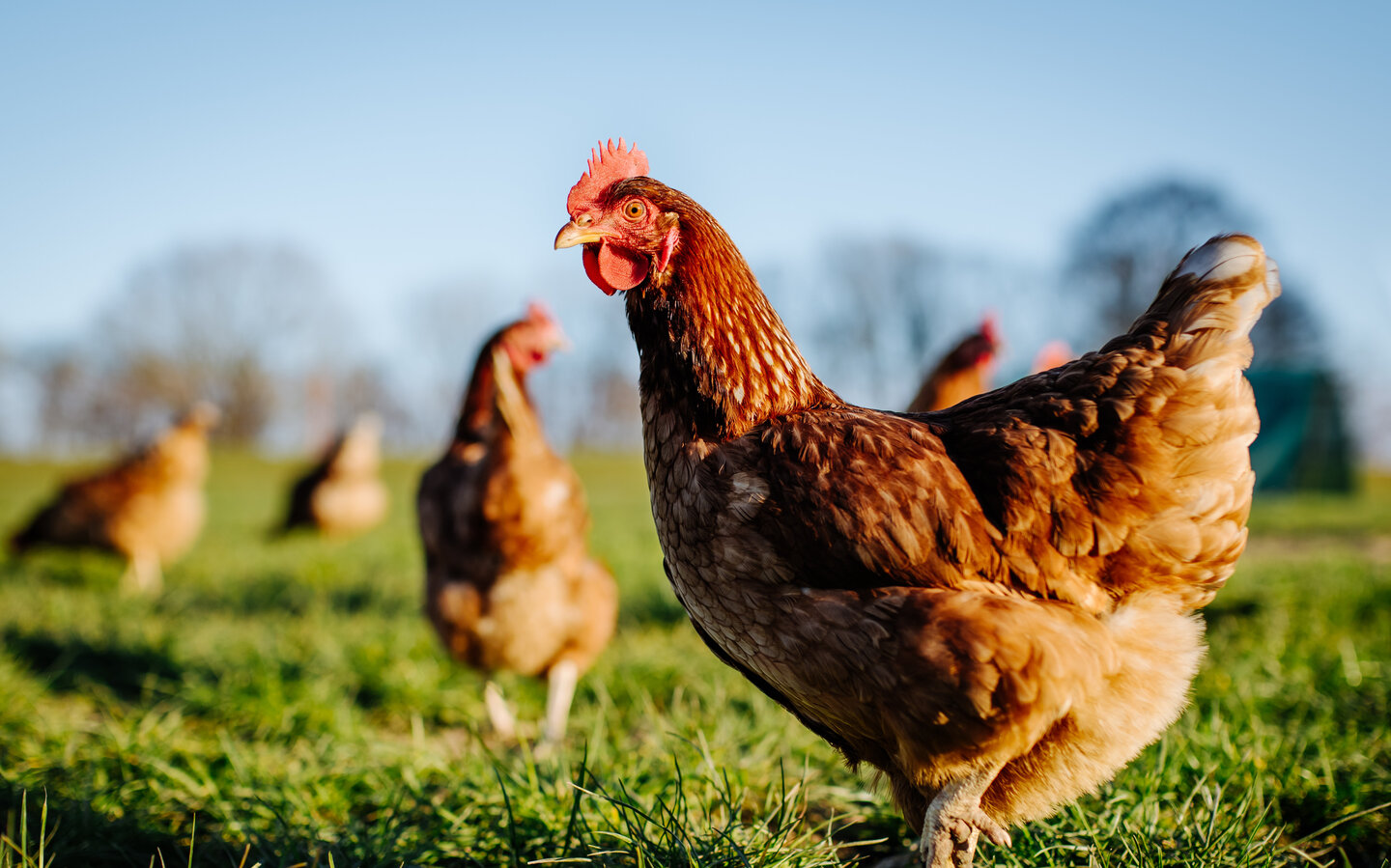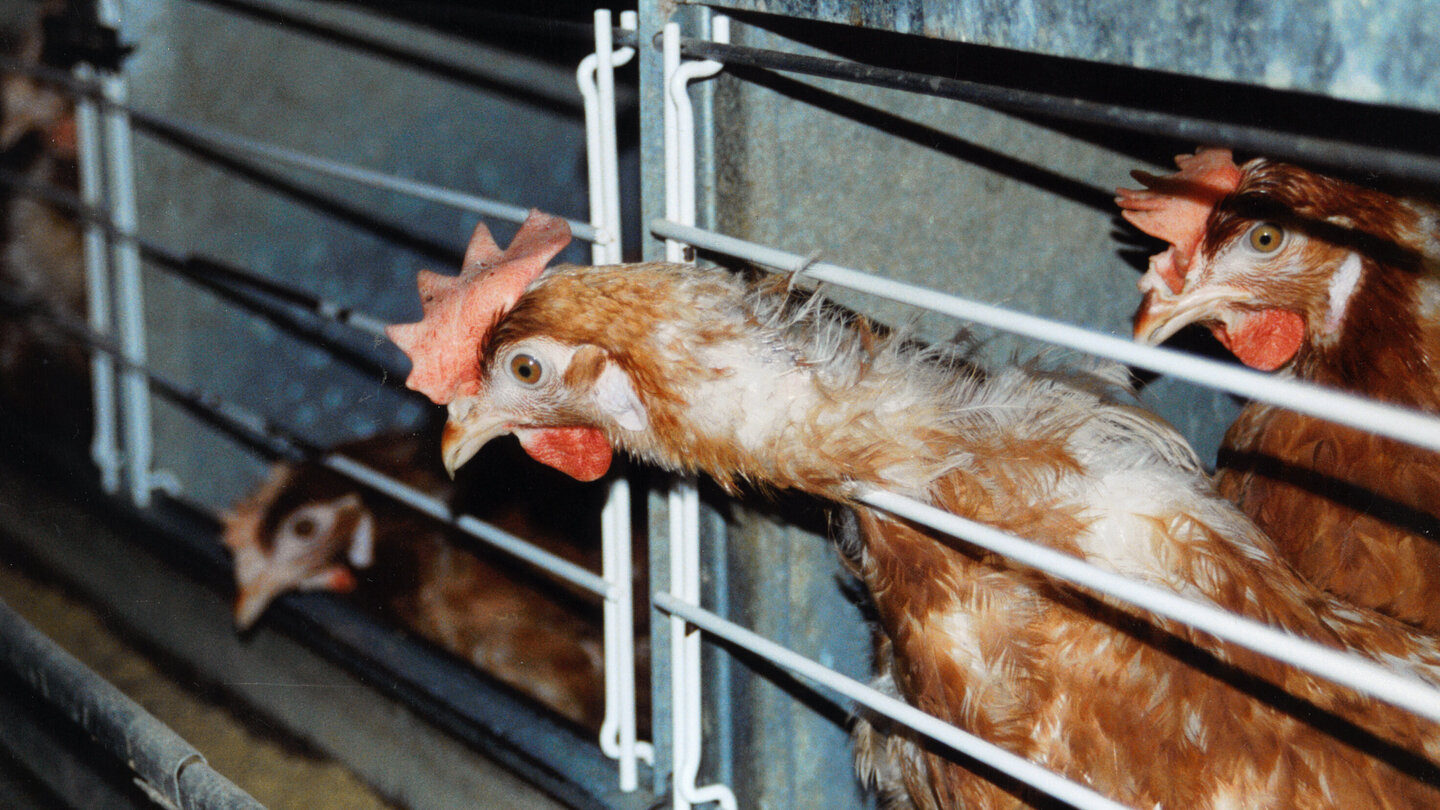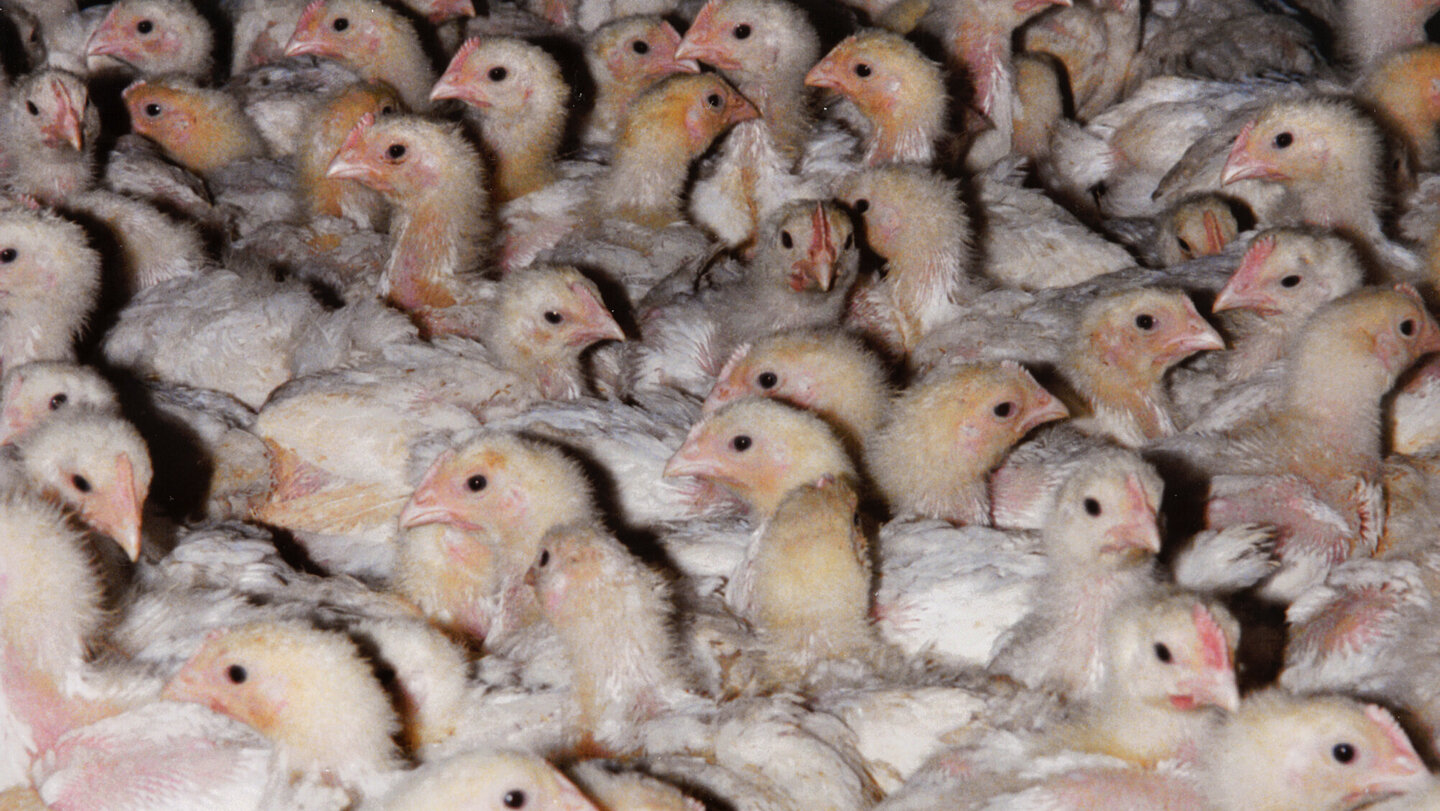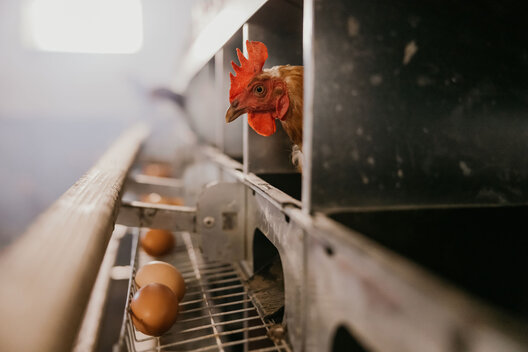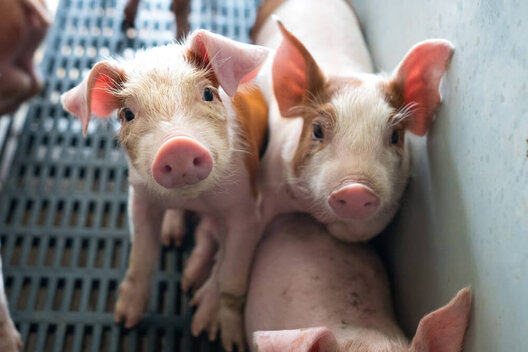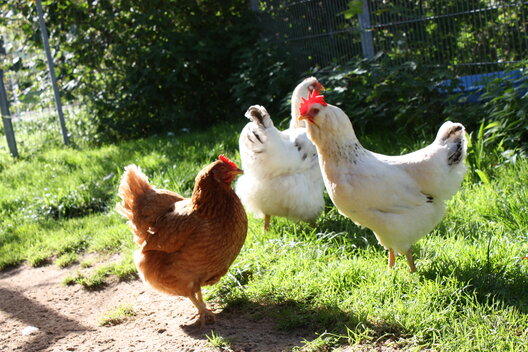Millions of chickens sufferThe short life of chickens in agriculture
Over 650 million chickens are slaughtered in this country every year. Broiler chickens and laying hens are bred to produce meat as quickly as possible or to lay lots of eggs . The animals' needs are not taken into account and they live in torturous conditions.
They are crammed into very small spaces and have no room to roam: Farming is designed for maximum profit, which is why the majority of chickens live in the most adverse conditions. The birds spend their short, exhausting lives with tens of thousands of other birds in huge facilities. They cannot pursue their natural behavior in any way.
Broiler chickens in factory farming
Around 92 million chickens are fattened for the German meat industry every year.1Most of them are kept on large industrial farms. Most of them are kept in barns with more than 50,000 animals crammed together. With this form of husbandry , the animals cannot go outside. The stables often have no daylight and offer little or no variety. Due to the lack of space, poor bedding and lack of structures, the birds are severely restricted: they cannot scratch, peck, dust bathe, run and explore as they naturally like to do. Added to this is the pungent-smelling ammonia gas produced by the droppings. It irritates the eyes and damages the animals' respiratory tracts. Depending on how they are fattened, chickens are slaughtered after just 30 to 42 days. In principle, chickens can live up to ten years. The weight of a broiler chicken in agriculture is around 2.1 kilograms at 35 days and 2.8 kilograms at 42 days. Adult wild chickens weigh an average of only 914 grams. Around 22 fat, heavy chickens crowd into one square meter at the end of the fattening period. Many birds can then only lie down. If they lie on the dirty and damp litter for a long time, their skin becomes painfully inflamed on the pads of their feet and on their breasts.
Broiler chickens bred to be sick
As more and more people want to eat poultry meat - especially cuts such as breasts or legs - chickens have been bred to put on a lot of meat very quickly, especially in these parts of the body. The unnaturally large breast muscle has shifted the animals' center of gravity. Their hips and legs can barely withstand this strain. Their legs become twisted and deformed. The animals limp, become lame or can no longer move at all due to the pain. As a result of the rapid weight gain, the birds often suffer from cardiovascular diseases. Many die of sudden cardiac death.
Laying hens suffer from cruel husbandry
In Germany, around 50 million hens are kept to lay eggs .2Keeping hens in old conventional battery cages has been banned in Germany since 2010. However, a cage variant, known as small group housing, is still permitted for existing farms until 2025, with a possible extension until 2028 at the latest. In these small group cages, the animals have extremely little space: each hen has barely more than an A4 page at its disposal. The cages have a perch and an area for laying eggs and scratching. This is anything but adequate for the hens' needs. The cages are so narrow that the hens can hardly move. They cannot even begin to pursue their innate instincts, such as bathing in the dust, scratching and pecking. Instead, many animals develop severe behavioral disorders and attack each other. As the animals do not move, they also suffer from health problems such as weak bones, foot ulcers and fatty liver. Laying hens are also severely restricted in floor housing. Nine hens have to share one square meter. The barn in free-range systems looks exactly the same, but here the animals can use an outdoor exercise area during the day.
Bred to lay over 300 eggs per year
In 2021, laying hens in Germany produced over 15.6 billion eggs3- a staggering figure. In agriculture, laying hens are bred for high performance so that they lay up to 320 eggs per year. As hens do not normally lay eggs at all times of the year, they are tricked into thinking it is summer by artificial lighting in the barns. The light is on for 16 hours a day. This enormously high egg production is extremely stressful for the hens' bodies. They are constantly exhausted. Over time, the laying performance decreases. The animals are then slaughtered when they are around one and a half years old. Their counterparts in the wild have a life expectancy of ten years.
No improvement for male chicks
As the male chicks of laying hens grow slowly and produce less meat than chicks of chicken breeds specially bred for fattening, they are "worthless" for farms. This is why, until recently, 45 million male chicks in Germany were gassed or shredded on their first day of life every year. Chick killing has been banned since January 2022.
However, the current alternatives are not free of animal suffering. Some hatcheries determine the sex of the embryos in the egg in order to sort out the males. This means that potentially 50 percent of the offspring could be "disposed of" before they hatch. Furthermore, it cannot be ruled out that they are already feeling pain at this stage. Other farms prefer to export the so-called brother chickens abroad. There they are often kept, reared, fattened and slaughtered under conditions that are contrary to animal welfare. The more sensible approach from an animal welfare perspective is to switch to dual-purpose chickens: chickens that can be kept for both egg and meat production. Although the animals lay fewer eggs and produce meat more slowly, they are more robust and healthier. This solution also prevents the male chicks of these chickens from being routinely killed.
What you can do
Consumers can make the biggest contribution to greater animal welfare by avoiding poultry meat, eggs and products containing them and opting for plant-based products instead. There is now a large selection available in supermarkets, for example meat alternatives made from pea and soy protein as well as various egg substitute products for baking or cooking. If you still want to eat chicken or eggs, look out for products that are labeled with labels such as the animal welfare label "Für Mehr Tierschutz" (For More Animal Welfare ) from the German Animal Welfare Federation.
This is what the German Animal Welfare Federation demands
As long as chickens still have to provide us humans with meat and eggs, they should lead an animal-friendly life. That is why the German Animal Welfare Federation is calling for
- No cage farming
- Fewer chickens in one barn
- Perches or raised levels to engage in natural roosting behaviour
- Outdoor run
- Good opportunities for dust bathing
- Ban on torture breeding
- Switch to dual-purpose chickens to reduce torture breeding and performance-related problems

